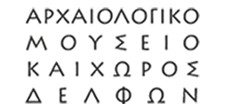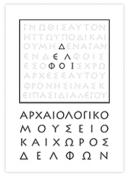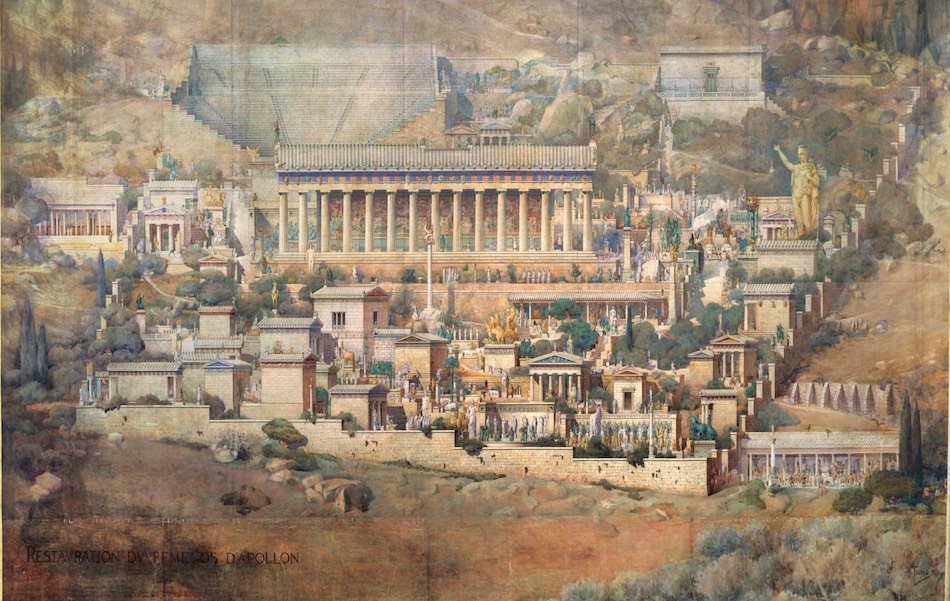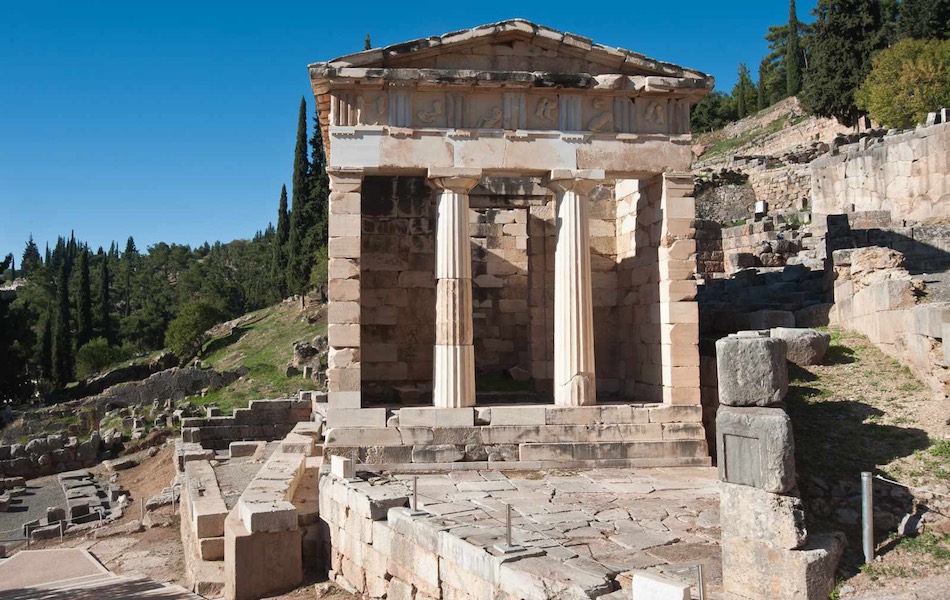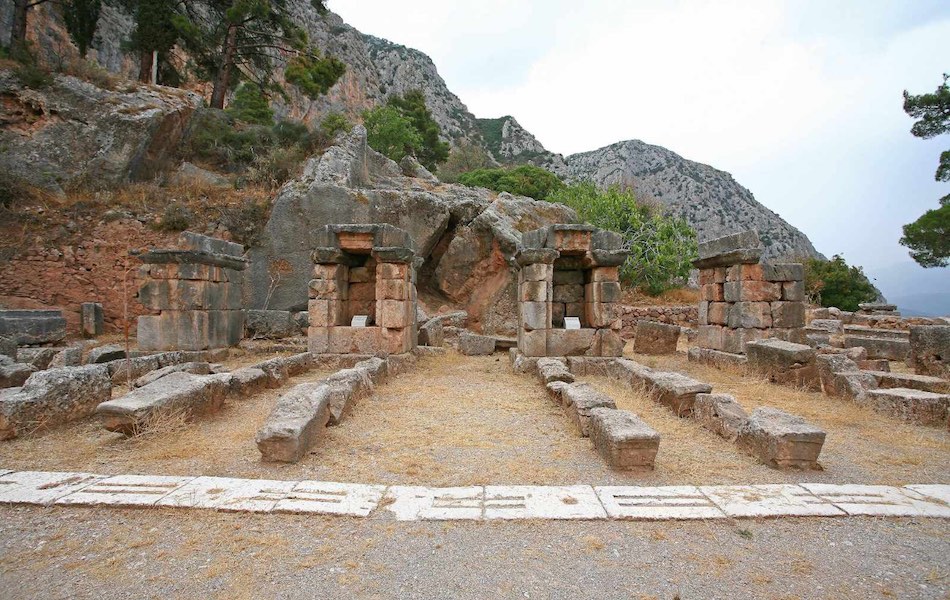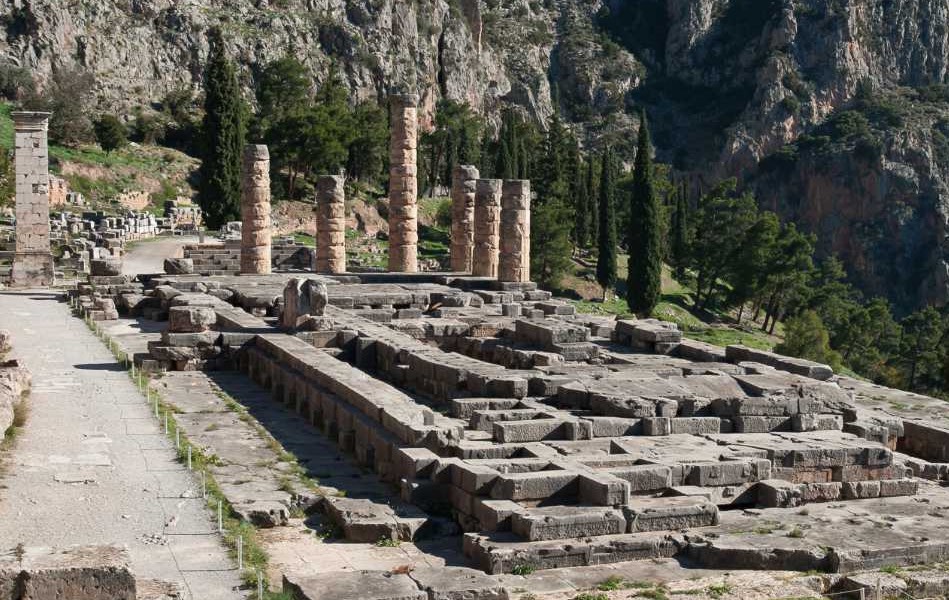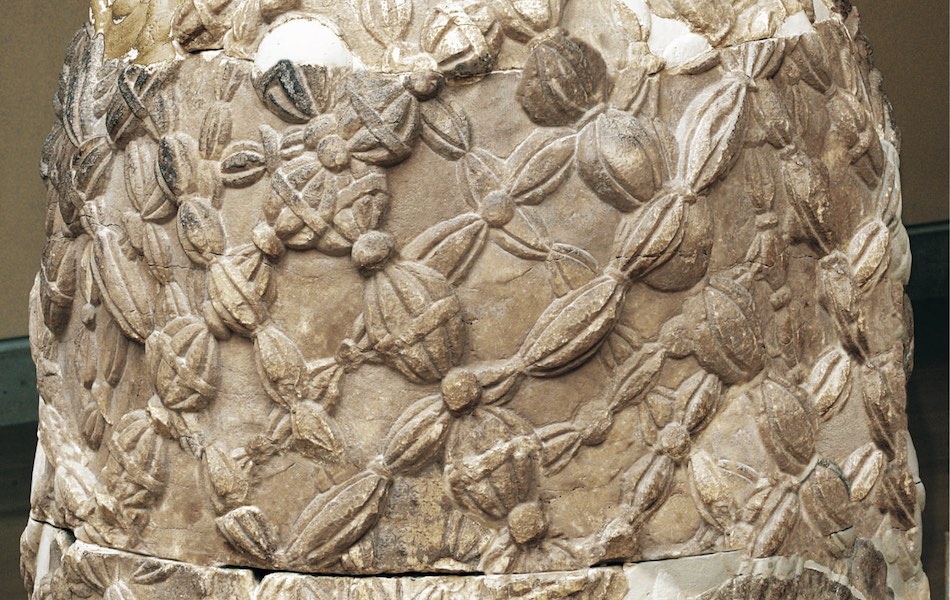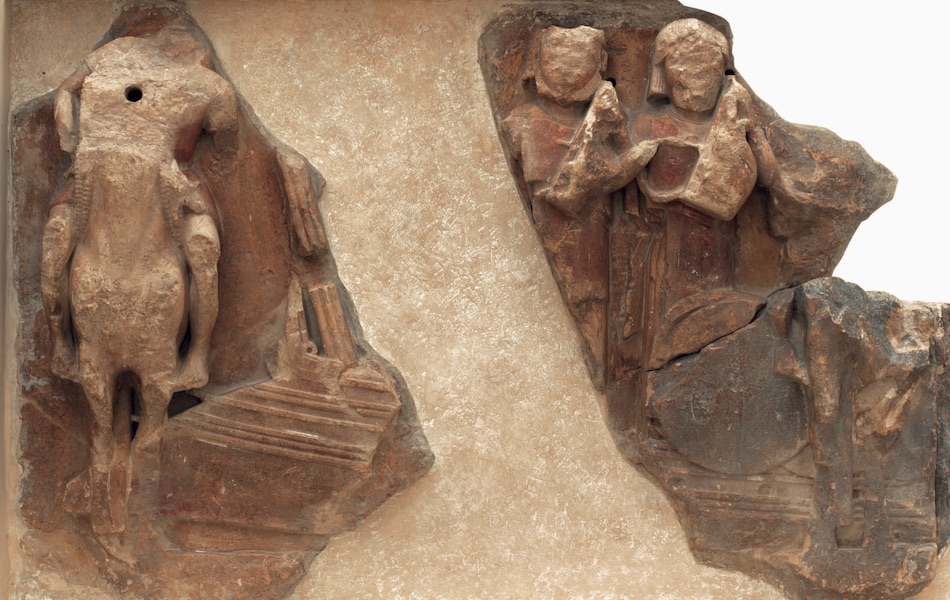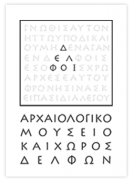This website uses cookies so that we can provide you with the best user experience possible. Cookie information is stored in your browser and performs functions such as recognising you when you return to our website and helping our team to understand which sections of the website you find most interesting and useful.
The Temple οf Apollo
Summary
The archaic temple of Apollo was constructed in 510 B.C. with money raised by many Greek cities under the auspices of the Alcmaeonids of Athens. When this temple was destroyed by an earthquake in 373 B.C., the Greek cities collected money again and built the extant temple, which was accomplished in ca 330 B.C. It was a Doric peripteral temple with a vestibule and an opisthodomos distyle in antis. In the cella was situated the statue of the god and the omphalos (navel of the earth), whereas in the vestibule were inscribed the Delphic maxims of the seven wise men of Ancient Greece.
The prehistory of the temple and the Archaic temple
According to the fable the first temple of Apollo was a hut made of laurel tree branches, the second one was made of wax and bees’ feathers, the third one made of bronze and the fourth one (apparently the only one which actually existed) was made of poros stone. This temple was destroyed around the middle of the 6th century B.C.
Then, the Greek cities raised money in order to build a new temple, which was accomplished under the supervision of the Alcmeonids of Athens in 510 B.C. It was a doric peripteral temple with 6 columns in front, made of poros stone with a marble façade and an exquisite sculpted decoration made by the sculptor Antenor. On the eastern pediment there was depicted the epiphany of Apollo, his arrival to Delphi accompanied by his sister Artemis and his mother Leto. On the western pediment was depicted a Gigantomachy scene, from which only the figures of Athena, a fallen giant, a male figure and the front parts of two horses have been preserved. This archaic temple was destroyed in 373 B.C.
The 4th century B.C. temple
After the destruction of the Archaic temple by an earthquake in 373 B.C. the Amphictyony collected money again for its reconstruction and the gestion of these funds was assigned to a council of Naopes, constituted by citizens of many cities. Its construction stopped in 356 B.C. due to the attacks of Philip II of Macedon and the Thessalians and it was resumed again in ca 343-342 B.C. This temple was finally accomplished in 334-333 B.C., whereas the sculpted decoration of the pediments was concluded in 327 B.C. The remains of this building we see today in the archaeological site of Delphi; it was created by the architects Spintharus, Xenodorus and Agathon. It is a peripteral doric temple with 6 columns on the facade; its vestibule and opisthodomos were distyle in antis. The marble pediments were made by the Athenian sculptors Praxias and Androsthenis. On the eastern pediment were depicted Apollo and the Muses and on the western pediment Dionysus among the Thyiads (Maenads). The presence of Dionysus was indispensable since he became the master of the temple during the three winter months when Apollo went to the land of the Hyperboreans; in fact Dionysus’ “tomb” was located within the temple. The metopes of the pteron bore no sculpted decoration; instead they bore golden or gilded shields, commemorating the victories of the Greeks against the barbarians. On the façade and the south side the shields were related to the victories against the Persians, particularly with that at Marathon (490 B.C.), whereas on the south and west side with the victories against the Galatians (278 B.C.). The cella was tripartite and consisted of the pronaos, the sanctum and the opisthodome. In an underground space under the cella the Pythia pronounced her oracles and only priests were allowed to enter. In the cella stood the statue of the god and the “omphalos”, the navel of the earth. We know very few things about the interior of the temple, mainly by ancient authors: on the walls of the vestibule were inscribed the “Delphic maxims”, famous slogans by the seven Greek wise men, such as “Know thyself”, “Avoid excess”, as well as the letter E. There was also a bronze statue of Homer and an altar dedicated to Poseidon. On another altar, dedicated to Hestia, burned permanently a log of fir tree. When the Thracians attacked Delphi in 83 B.C. the fire on this altar died out, which was considered a bad omen.
The builing was restored and renovate in 84 A.D. by the emperor Domitian, as attested by a magnificent inscription kept in the Museum, whereas it also suffered damages of fire in the 3rd century A.D. and was partly restored by Julian in 363 A.D. whereas it seems to have been abandoned following the anti-pagan edicts of Theodosius I.
MUSEUM OF DELPHI
